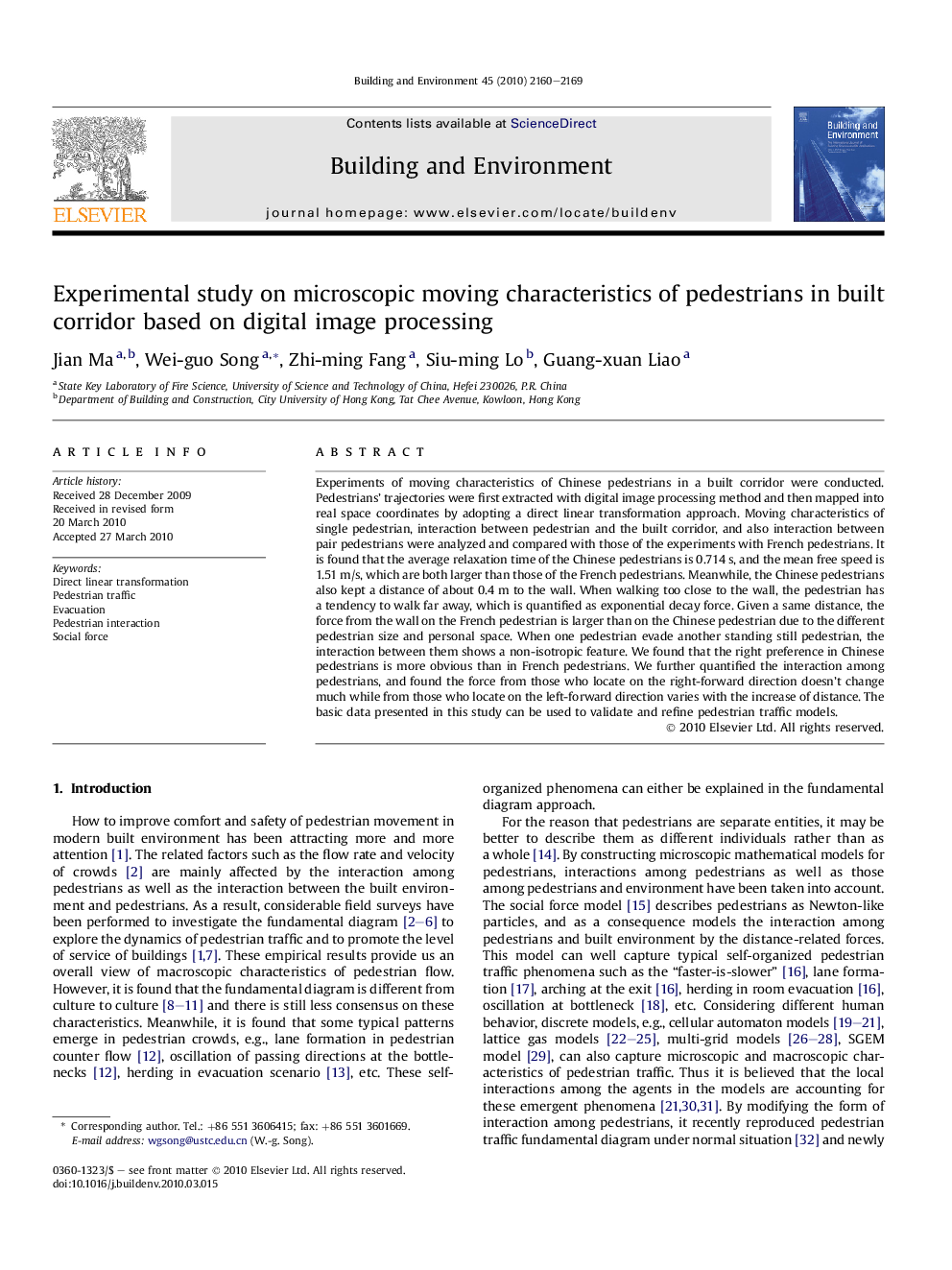| Article ID | Journal | Published Year | Pages | File Type |
|---|---|---|---|---|
| 249232 | Building and Environment | 2010 | 10 Pages |
Experiments of moving characteristics of Chinese pedestrians in a built corridor were conducted. Pedestrians’ trajectories were first extracted with digital image processing method and then mapped into real space coordinates by adopting a direct linear transformation approach. Moving characteristics of single pedestrian, interaction between pedestrian and the built corridor, and also interaction between pair pedestrians were analyzed and compared with those of the experiments with French pedestrians. It is found that the average relaxation time of the Chinese pedestrians is 0.714 s, and the mean free speed is 1.51 m/s, which are both larger than those of the French pedestrians. Meanwhile, the Chinese pedestrians also kept a distance of about 0.4 m to the wall. When walking too close to the wall, the pedestrian has a tendency to walk far away, which is quantified as exponential decay force. Given a same distance, the force from the wall on the French pedestrian is larger than on the Chinese pedestrian due to the different pedestrian size and personal space. When one pedestrian evade another standing still pedestrian, the interaction between them shows a non-isotropic feature. We found that the right preference in Chinese pedestrians is more obvious than in French pedestrians. We further quantified the interaction among pedestrians, and found the force from those who locate on the right-forward direction doesn’t change much while from those who locate on the left-forward direction varies with the increase of distance. The basic data presented in this study can be used to validate and refine pedestrian traffic models.
